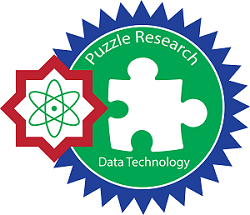Enhancing Academic Service Efficiency: Design, Implementation, and Evaluation of a Web-Based Laboratory Booking System Using the Systems Development Life Cycle Framework
DOI:
https://doi.org/10.57152/malcom.v5i4.2162Kata Kunci:
Laboratory Booking System, Operational Efficiency, Resource Management, SDLC, SUSAbstrak
This study addresses inefficiencies in higher education administration that hinder the achievement of Sustainable Development Goal 4 (SDG 4), particularly in managing shared academic resources like laboratories. It presents the design, implementation, and evaluation of a web-based laboratory booking system developed using the Waterfall model within the Systems Development Life Cycle (SDLC), utilizing JavaServer Pages (JSP) and MySQL. The system features real-time lab availability tracking, automated booking, and an integrated administrative dashboard. Usability was assessed through quantitative testing and a System Usability Scale (SUS) survey involving 30 participants, including students and lab staff. Results showed a task completion rate above 95% and an average SUS score of 83.6, categorized as “excellent” and within the top usability percentile. The findings demonstrate that a systematically developed web-based solution can substantially enhance administrative efficiency, resource utilization, and user satisfaction. Moreover, the research provides a scalable and replicable model for academic institutions aiming for digital transformation, underscoring that improving operational systems is a critical step toward realizing the goals of quality education and institutional sustainability aligned with SDG 4.
Unduhan
Referensi
Abad-Segura, E., González-Zamar, M. D., Infante-Moro, J. C., & García, G. R. (2020). Sustainable management of digital transformation in higher education: A global analysis of the main trends. Sustainability, 12(5), 2147. https://doi.org/10.3390/su12052147
Al-Samarraie, H., & Saeed, N. (2018). A systematic review of cloud computing adoption challenges in higher education. Interactive Learning Environments, 26(5), 589–603. https://doi.org/10.1080/10494820.2017.1350634
Alam, I., Sarwar, N., & Noreen, I. (2022). Statistical analysis of software development models by six-pointed star framework. PLoS One, 17(4), e0264420. https://doi.org/10.1371/journal.pone.0264420
Alazzawi, A., Yas, Q., & Rahmatullah, B. (2023). A comprehensive review of software development life cycle methodologies: Pros, cons, and future directions. Iraqi Journal for Computer Science and Mathematics, 4(4), 173–190. https://doi.org/10.52866/ijcsm.2023.04.04.014
Alkhaldi, D., et al. (2018). Developing and implementing web-based online university facilities reservation system. In Proceedings of the 2018 International Conference on Computational Science and Computational Intelligence (CSCI) (pp. 6700–6708). IEEE.
Alshaikh, M., & Al-Utaibi, K. (2020). Developing and implementing a web-based online university facilities reservation system. In Proceedings of the 2020 International Conference on Computational Science and Computational Intelligence (CSCI) (pp. 1234–1239). IEEE.
Andreani, F., Winata, G., & Halim, E. V. (2018). GAP analysis of Traveloka.com: Hotel consumers’ expectations and perceptions of the website. Jurnal Hospitality dan Manajemen Jasa, 3(1), 26–38.
Apata, O. E., et al. (2025). Artificial intelligence in higher education: A systematic review of contributions to SDG 4 (Quality Education) and SDG 10 (Reduced Inequality). Preprints. https://doi.org/10.20944/preprints202506.2369.v1
Barjtya, S., Sharma, A., & Rani, U. (2017). A detailed study of software development life cycle (SDLC) models. International Journal of Engineering and Computer Science, 6(7), 22097–22100. https://doi.org/10.18535/ijecs/v6i7.32
Blaya, J. A., et al. (2011). Full impact of laboratory information system requires direct use by clinical staff: Cluster randomized controlled trial. Journal of the American Medical Informatics Association, 18(1), 11–16. https://doi.org/10.1136/jamia.2010.005280
Brooke, J. (2018). The System Usability Scale (SUS): A retrospective. Journal of Usability Studies, 13(2), 577–590.
Clark, H. (2025, June 9). What is the software development life cycle (SDLC)? The Product Manager. https://theproductmanager.com/topics/software-development-life-cycle/
De Geyter, B. E. G., et al. (2017). The impact of laboratory quality management system implementation on quality indicators: A systematic review. Pathology and Laboratory Medicine International, 9, 29–37. https://doi.org/10.2147/PLMI.S139474
Derbas, A., et al. (2025). The role of E-learning in institutions of higher education in achieving the goals of sustainable development in Jordan. PLoS One, 20(3), e0319192. https://doi.org/10.1371/journal.pone.0319192
Encarnacion, R. (2024). Booking and reservation system: A unified application using location-based services for sustainable tourism networks. International Journal of Advanced Research in Science, Communication and Technology, 7(1), 739–749. https://doi.org/10.48175/IJARSCT-18889
Gusmiati, E., Siregar, N., & Ritonga, M. (2022). The impact of workload and work environment on employee performance with job stress as an intervening variable. International Journal of Social Science and Human Research, 5(8), 3456–3463. https://doi.org/10.47191/ijsshr/v5-i8-37
Maheshkar, C., et al. (2024). Digitalization (ICTs) of higher education for achieving Sustainable Development Goal for Education (SDG4). In The role of ICTs in transforming higher education: Digitalization and emerging trends. Springer. https://doi.org/10.1007/978-981-97-1386-8_6
Mathews, A., & Marc, D. (2017). Usability evaluation of laboratory information systems. Journal of Pathology Informatics, 8, 40. https://doi.org/10.4103/jpi.jpi_24_17
Montesdioca, G. P. Z., & Maçada, A. C. (2015). Measuring user satisfaction with information security practices. Computers & Security, 48, 29–41. https://doi.org/10.1016/j.cose.2014.10.015
Muhammad, N. A., & Yusof, S. M. (2023). Enhancing user satisfaction through an online information system and DMAIC methodology: A case study of administrative processes. ARPN Journal of Engineering and Applied Sciences, 18(15), 2745–2755.
Rinawiyanti, E. D., et al. (2025). Mixed method usability testing for user experience and user interface of AI-based supermarket applications. Journal of Applied Data Sciences, 6(1), 483–495.
Saravanos, A., & Curinga, M. X. (2023). Simulating the software development lifecycle: The waterfall model. Applied System Innovation, 6(6), 108. https://doi.org/10.3390/asi6060108
Usman, M., & Al-Hashedi, K. (2021). A comprehensive review of software development life cycle methodologies: Pros, cons, and future directions. International Journal of Computer Science and Mobile Computing, 10(4), 1–15. https://doi.org/10.47760/ijcsmc.2021.v10i04.001
Zahra, F. T., & Hussain, A. (2022). A review on various software development life cycle (SDLC) models. International Journal of Computer Applications, 184(15), 23–28. https://doi.org/10.5120/ijca2022922119
##submission.downloads##
Diterbitkan
Cara Mengutip
Terbitan
Bagian
Lisensi
Hak Cipta (c) 2025 Rayi Dwipanilih, Ellis Annisa, Muhammad Ikhwan

Artikel ini berlisensiCreative Commons Attribution-ShareAlike 4.0 International License.
Copyright © by Author; Published by Institut Riset dan Publikasi Indonesia (IRPI)
This Indonesian Journal of Machine Learning and Computer Science is licensed under a Creative Commons Attribution-ShareAlike 4.0 International License.




















